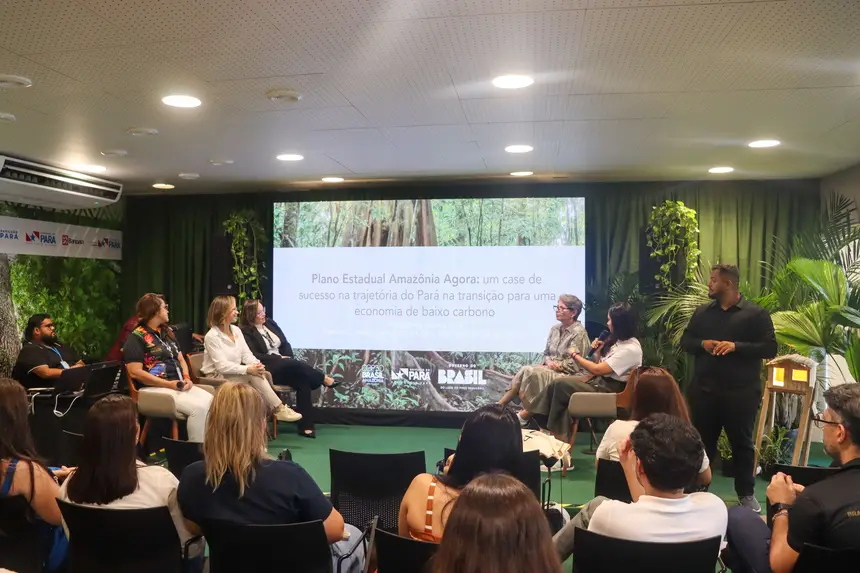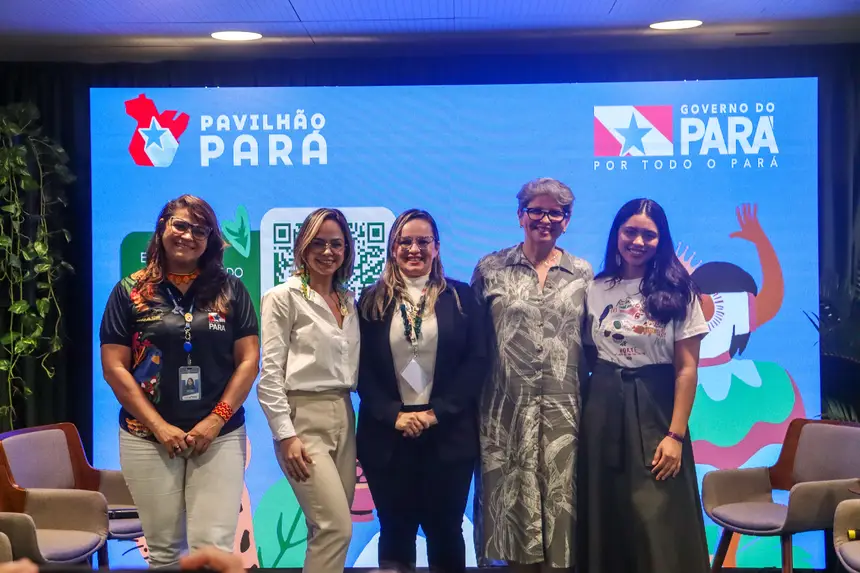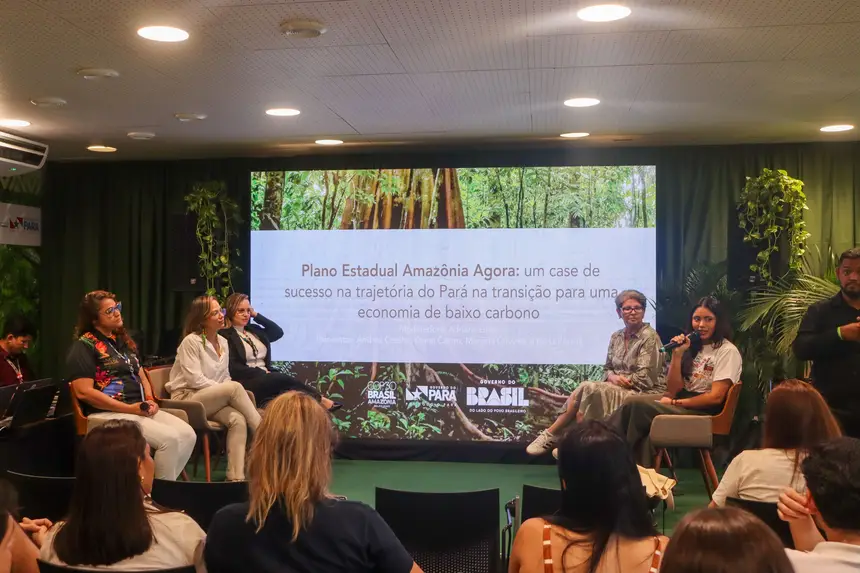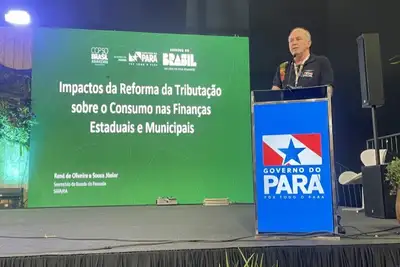Pará consolidates the Amazon Now Plan and positions itself as a reference in the transition to a low-carbon economy
Government representatives detailed the evolution of actions to combat deforestation and strengthen low-carbon economic alternatives that today place Pará at the center of international climate discussions

In yet another highlight panel at the Pará Pavilion, the Secretary of Environment and Sustainability (Semas) presented, on Saturday (15), at the Green Zone of COP30, the trajectory of two decades of environmental policies that culminated in the robust results of the State Amazon Now Plan (PEAA).
From international pressure to strengthening state policies
The opening of the panel was led by Semas technician, Nívea Pereira, who recalled the historical line that shaped the current environmental governance of the State. She noted that the process began in the early 2000s, driven by global pressures in the face of advancing deforestation in the Amazon.
"It all started at Rio-92, when the first international agreement on emission reduction was created. It was there that the principle of common but differentiated responsibilities emerged - everyone must act, but those who polluted more and have more resources must do more and support others," she explained.
Nívea also highlighted that, with the launch of the Action Plan for the Prevention and Control of Deforestation in the Legal Amazon (PPCDAm) in 2004, the federal government established the goal of reducing illegal deforestation by 80% by 2020. "And in 2009, Pará created the PPCAD, the state plan adapted to local specificities. It was completely successful; its implementation led to a drastic reduction in deforestation," she stated.

Expressive results drive bolder goals
Starting in 2019, Pará faced a 52% increase in the deforestation rate, a scenario that required immediate responses. Intensification of monitoring with official data, reinforcement of enforcement, and encouragement of sustainable economic alternatives became pillars of the state reaction.
Semas technical advisor, Andréa Coelho, recalled the turning point of this process: "We reached such a critical moment that we celebrated falling from a 52% increase to 17%. Then, 7%. Subsequently, there were significant drops: 21% in 2022, 21% in 2023, 27% in 2024, and now 12% in 2025. The outlook is very good."
According to Andréa, the PEAA innovated by going beyond command and control, incorporating economic instruments such as REDD+, PSA, bioeconomy, and restoration of native vegetation. "The plan brought alternatives to deforestation. It’s not just about reducing today, but building a low-carbon economy based on the forest. The Amazonian bioeconomy is different from the European one; here it is the bioeconomy of the forest, and we are learning and advancing," she emphasized.
The positive results allowed the State to bring forward its goals. The PEAA, launched in 2020 with the aim of reducing emissions by 43% by 2036, had its deadline shortened to 2030. "And the data shows that we are already below the maximum deforestation rate projected for 2030, even in 2025," she highlighted.
Restoration, through the maintenance and expansion of areas of natural vegetation, integrates another essential axis. For this, monitoring of secondary vegetation gains prominence. "Brazil has always been a reference in monitoring primary forest. Now, Inpe (National Institute for Space Research) and Semas have launched the first national system dedicated to secondary vegetation. This is fundamental to consolidate goals and expand conservation beyond carbon sequestration," Andréa added.

PEAA consolidates as a state policy
The panelists concluded the meeting emphasizing that the PEAA today stands as a state policy, based on clear guidelines, continuous monitoring, and integration between mitigation and sustainable development. The plan has been internationally recognized as one of the most consistent strategies for emission reduction and the construction of a low-carbon economy in the Amazon.
The panel reinforced Pará's commitment to the global climate agenda and highlighted that the State is advancing with strategy, governance, and concrete results — consolidating itself as a reference in combating deforestation and building new sustainable economies.
Text: Lucas Maciel – Ascom Semas










